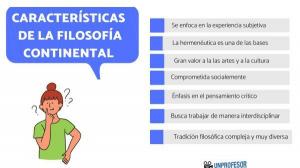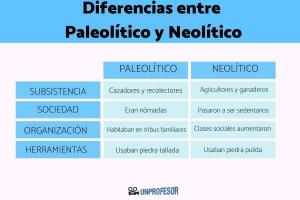Absolutism in Spain: characteristics and history

Image: Slideshare
At the beginning of the Modern Age absolutism became the common political regime in the western European states, and Spain was no exception. The absolutism of Spain did not span the same time as that of other European countries, it came later and ended completely somewhat later as well. Due to the importance that absolutism had for the history of Spain, in this lesson from a PROFESSOR we are going to talk about the characteristics and history of absolutism in Spain.
Index
- The Austrias in Spain
- The Bourbons
- The reign of Fernando VII and the end of absolutism
- Characteristics of absolutism in Spain
The Austrias in Spain.
The concept of monarchy of the Habsburgs in Spain it was very different from the absolutism of the French Bourbons. For the Habsburgs it was important to respect the local peculiarities that Spain possessed. It should be taken into account that the Hispanic kingdom had always been a state made up of regions with great autonomy, due to the particularities that some monarchs had given to the kingdoms conquered.
In the seventeenth century the Count Duke of Olivares recommended to the king Philip IV qthat he ceased to be king of the kingdoms that made up Spain and will become King of Spain, uniting all the power in the figure of him, a kind of absolutist power, but the king preferred to keep the local peculiarities of the different kingdoms.
The years when the monarch of Spain was Austria was marked by a form of government with absolutist overtones, but very different from the rest of European countries, they had some absolutist characteristics, for example the supremacy of the king's power over the nobility, but the autonomy of the regions was contrary to absolutism French. This changed with the coming to power of the Bourbons.
In this other lesson we will discover the definition and characteristics of absolutism.

Image: Social and natural high school
The Bourbons.
The victory of Felipe de Anjou in the War of succession brought about a huge change in the government of Spain. Philip V introduced French absolutism, typical of the Bourbons, in part because it was the most particular territories (Catalonia and Valencia) that supported Felipe's opponent in the war.
With the arrival of Felipe V and his successors began absolutist reformism, a time in which through a series of reforms an attempt was made to build an absolutist monarchy centralized, imitating the French model, and ending the particularities of the political regime of the Austria.
The end of the absolutism of the Bourbons seemed to come with the popular victory in the War of Independence, when Spain beat France and the first Constitution of Spain was drawn up, that of 1812, according to which the power of the king was limited. The Constitution was only in force for a short time, since after the war Fernando VII abolished it and imposed absolutism again.
The reign of Fernando VII and the end of absolutism.
After Napoleon's defeat, the European states reestablished absolutist regimes. The return of Fernando VII supposed the annulment of the liberal ideas of the Constitution of 1812, and the return to the absolutist state. We can say that the reign of Fernando VII is characterized by three periods:
- The absolutist administration: 1814-1820: The period in which the cancellation of the liberal proposals was carried out, and it returned to absolutism. In this period the independence of the American colonies also took place.
- The liberal triennium: 1820-1823: Liberal period, due to a military pronouncement against King Fernando VII. The Constitution of 1812 was reinstated, returning to liberal ideas and nullifying absolutism. Although it did not take long for the king to get reinforcements to regain his position, this can be seen as the beginning of the end of absolutism.
- The ominous decade: 1823-1833: The return to absolutism. A period marked by economic problems, and by civil wars. In this decade the Carlist Wars took place, a civil war between Liberals and the Carlist. The end of the war would lead to the end of absolutism, becoming Spain is a liberal state.

Image: Green ear strain
Characteristics of absolutism in Spain.
To end this lesson on the characteristics and history of absolutism in Spain, we must talk about the characteristics of this regime in Spain. Most were the same as in the rest of Europe, but others were unique to the Spanish system. Some characteristics of absolutism in Spain They are:
- The king is not under the submission of any authority. He only answers to God.
- The will of the king is law, he can create and repeal laws at will. Although at some point he became limited by the Courts
- The monarch had an army permanent, which diminishes the power of the nobility.
- The king appointed a series of officials, the so-called bureaucracy. His role was to keep absolutism at work in all parts of the Kingdom. Examples of these were the viceroys and ambassadors.
- Economically, the system was mercantilism.
- The king had control and ownership of the different routes, whether by land or by sea.
- The monarch included in his figure all the powers, both the legislative, the executive, and the judicial.
If you want to read more articles similar to Absolutism in Spain: characteristics and history, we recommend that you enter our category of Story.



